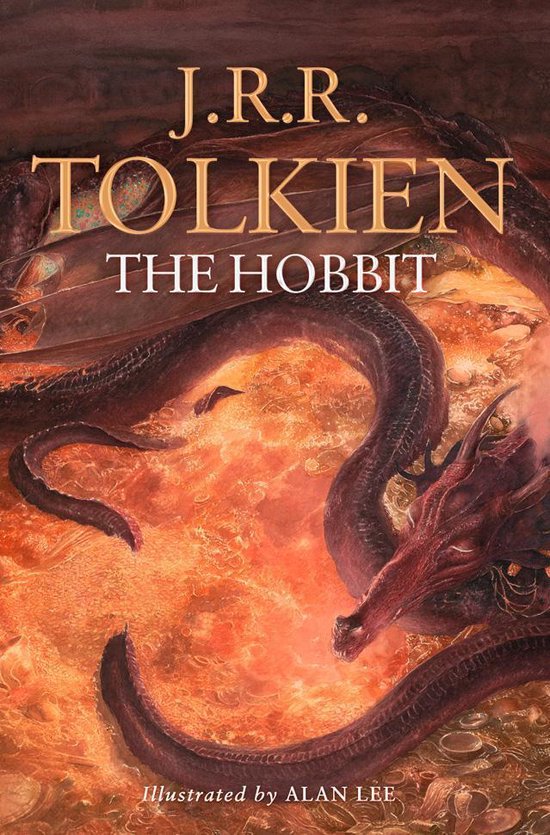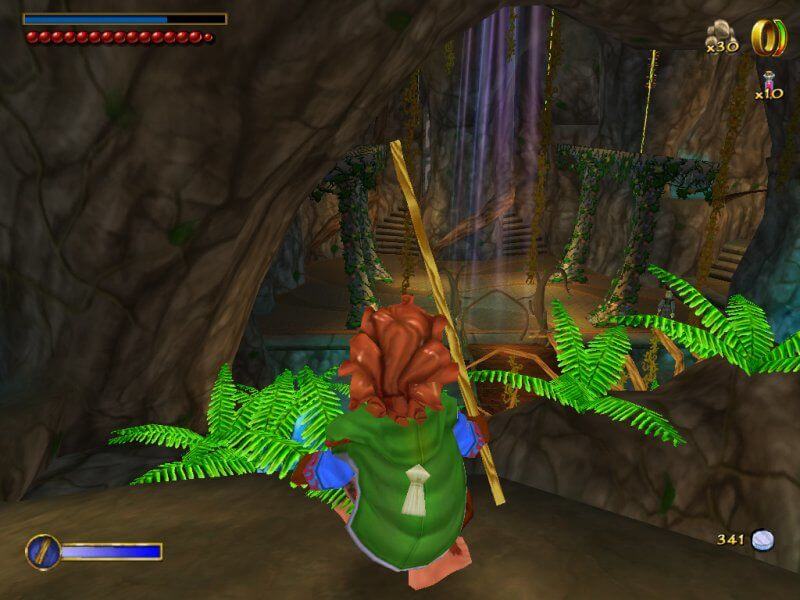| The Hobbit | |
|---|---|
| Developer(s) | Beam Software |
| Publisher(s) | Melbourne House |
| Platform(s) |
|
| Release | |
| Genre(s) | Interactive fiction |
| Mode(s) | Single-player |
The Hobbit is an illustrated text adventure computer game released in 1982 for the ZX Spectrum home computer and based on the 1937 book The Hobbit, by J. R. R. Tolkien. It was developed at Beam Software by Philip Mitchell and Veronika Megler[2][3] and published by Melbourne House. It was later converted to most home computers available at the time including the Commodore 64, BBC Micro and Oric computers.[4] By arrangement with the book publishers, a copy of the book was included with each game sold.
The Hobbit - game update v.1.3 ENG - Download. Game update (patch) to The Hobbit, a(n) adventure game, v.1.3 ENG, added on Monday, December 13, 2004. File type Game update. File size 22.7 MB. Downloads 3344 (last 7 days) 8. Last update Monday, December 13, 2004. In ALL cases this is a FALSE ALARM as NONE of the Game Trainers @ GCW contain known malicious code! More info in the PC Games FAQ! If you have problems using a trainer in combination with Windows Vista, 7, 8 or 10 then make sure to run the trainer with Administrator rights and when needed in Windows XP or Windows 98 compatibility mode! I really want to play this game again. I have very fond memories of it from my childhood. However the PC version on Amazon says Windows XP and 98. Do they have a version for PS3 or Xbox, or is there a way to play it on Windows 7? 15 The Hobbit (2003) If you are going to copy an intellectual property, then The Legend of Zelda is a solid place to start. Released in 2o03 but completely unrelated to Jackson's trilogy, The Hobbit is a moderately fun 3D action-adventure game which relies too exhaustively on imitating its indisputable inspiration.
The parser was very advanced for the time and used a subset of English called Inglish.[5][6] When it was released, most adventure games used simple verb-noun parsers (allowing for simple phrases like 'get lamp'), but Inglish allowed the player to type advanced sentences such as 'ask Gandalf about the curious map then take sword and kill troll with it'. The parser was complex and intuitive, introducing pronouns, adverbs ('viciously attack the goblin'), punctuation and prepositions and allowing the player to interact with the game world in ways not previously possible.
Gameplay[edit]
Many locations are illustrated by an image, based on originals designed by Kent Rees. On the tape version, to save space, each image was stored in a compressed format by storing outline information and then flood filling the enclosed areas on the screen.[7] The slow CPU speed meant that it would take up to several seconds for each scene to draw. The disk-based versions of the game used pre-rendered, higher-quality images.

The game has an innovative text-based physics system, developed by Veronika Megler.[8] Objects, including the characters in the game, have a calculated size, weight, and solidity. Objects can be placed inside other objects, attached together with rope and damaged or broken. If the main character is sitting in a barrel and this barrel is then picked up and thrown through a trapdoor, the player would go through.
Unlike other works of interactive fiction, the game is also in real time, insofar as a period of idleness causes the 'WAIT' command to be automatically invoked and the possibility of events occurring as a result. This can be suppressed by entering the 'PAUSE' command, which stops all events until a key is pressed.
The game has a cast of non-player characters (NPCs) entirely independent of the player and bound to precisely the same game rules. They have loyalties, strengths, and personalities that affect their behaviour and cannot always be predicted. The character of Gandalf, for example, would roam freely around the game world (some fifty locations), picking up objects, getting into fights and being captured.
The volatility of the characters, coupled with the rich physics and impossible-to-predict fighting system, enabled the game to be played in many different ways, though this would also lead to problems (such as an important character being killed early on). There are numerous possible solutions and with hindsight, the game might be regarded as one of the first examples of emergent gameplay. This also resulted, however, in many bugs; for example, during development Megler found that the animal NPCs killed each other before the player arrived. The game's documentation warned that 'Due to the immense size and complexity of this game it is impossible to guarantee that it will ever be completely error-free'. Melbourne House issued a version 1.1 with some fixes, but with another bug that resulted in the game being unwinnable, forcing it to release version 1.2, and the company never fixed all bugs.[5]
Reception[edit]
Info in 1985 rated The Hobbit on the Commodore 64 three-plus stars out of five, stating that the graphics were 'pleasant but no show-stoppers', and that the game's parser and puzzles were 'typical of most adventures today'. The magazine concluded that 'Tolkien fans will most likely be pleased with this title'.[9]
The Hobbit was a bestseller in the UK on the ZX Spectrum in 1983[10] and both the C64 and BBC the following year.[11] The game won the 1983 Golden Joystick Award for best strategy game.[12] The game was also a huge commercial success, selling over 100,000 copies in its first two years at a retail price of £14.95.[13] There are no records of sales figures but in an article from March 1985 it was estimated in the range of 100,000 to 200,000[14] and a figure of 500,000 copies is possible, making it an 'excellent candidate for the bestselling text adventure of all time, challenged, if at all, only by Infocom’s Zork I'[5]. The use of images on many of the locations as opposed to mostly text-only adventure games of the time, the flexibility of the Inglish parser, the innovative independence of the non-player characters, the popularity of Tolkien's work, all attributed to the game's phenomenal success.
In 1989, Macworld reviewed the Macintosh versions of The Hobbit, The Fellowship of the Ring and The Shadows of Mordor simultaneously, criticising The Hobbit, calling it 'particularly clumsy' as it is 'handicapped by a 400-word input vocabulary' as opposed to the latter two games' 800 words. Macworld called The Fellowship of the Ring 'particularly intricate' and recommended it as an entry point to the series as opposed to The Hobbit. They praised The Hobbit's graphics, but stated that in the later titles 'the art adds little to the games' overall appeal.' Furthermore, Macworld criticised the dated and rigid nature of the text-adventure format (although conceding that 'the programming was undertaken almost a decade ago'),[15] but acknowledged that the three games were 'literate and faithful in spirit to original books'.
Legacy[edit]
To help players a book called 'A guide to playing The Hobbit' by David Elkan was published in 1984.[16]
Developer Beam Software followed up The Hobbit with 1985's Lord of the Rings: Game One, 1987's Shadows of Mordor: Game Two of Lord of the Rings, and 1989's The Crack of Doom. They would also reuse Inglish in 'Sherlock'.
In 1986 a parody of the game was released by CRL, The Boggit.
A phrase from the game which has entered popular culture is 'Thorin sits down and starts singing about gold.'[17]

Also, the game is mentioned in Nick Montfort's, Twisty Little Passages, a book exploring the history and form of the interactive fiction genre.

Discworld Noir references The Hobbit: when the protagonist, Lewton, discovers that someone concealed themselves in a wine barrel, he wonders why that brings to mind the phrases 'You wait – time passes' and 'Thorin sits down and starts singing about gold.'
References[edit]
- ^'Special Feature: Happy Birthday!'. Popular Computing Weekly. 1 May 1987. pp. 14–8.
- ^Simon Sharwood (18 November 2012). 'Author of 80's classic The Hobbit didn't know game was a hit'. The Register. Retrieved 18 November 2012.
- ^Original game packaging
- ^'Personal Computer Games' (3). February 1984: 4. Retrieved 3 May 2016.Cite journal requires
|journal=(help) - ^ abcMaher, Jimmy (16 November 2012). 'The Hobbit'. The Digital Antiquarian. Retrieved 10 October 2014.
- ^Ruminations On 'The Hobbit' FandomArchived 2014-10-10 at the Wayback Machine
- ^'The Hobbit: Phil Garratt, after a brief sojourn in Middle Earth, takes time off to tell us what he found there' Garratt, Phil (1983) ZX Computing issue 8304, page 76
- ^'The Hobbit and his Lady'. L'avventura è l'avventura. April 2002. Retrieved 10 October 2014.
- ^Dunnington, Benn; Brown, Mark R. (December 1986 – January 1986). 'C-64/128 Gallery'. Info. pp. 4–5, 88–93. Retrieved 19 March 2019.
- ^'Melbourne House Advertisement'. Sinclair User (13): 4. April 1983. Retrieved 3 May 2016.
- ^'Chart Toppers', C&VG issue 28, page 163,
- ^'The Golden Joystick Award', C&VG issue 29, page 15
- ^Mike Gerrard: Adventuring into an Unknown World. In: The Guardian, 1984-08-30, section Micro Guardian/Futures, page 13.
- ^[1], C&VG issue 41
- ^McCandless, Keith (May 1989). 'New Hobbits For Old'. Macworld. Mac Publishing. p. 209.
- ^David Elkan: A Guide to Playing the Hobbit. Melbourne House, 1984, ISBN0-86161-161-6
- ^Campbell, Stuart (December 1991). 'Top 100 Speccy Games'. Your Sinclair (72): 28.
External links[edit]
- The Hobbit at MobyGames
- The Hobbit at SpectrumComputing.co.uk
- The Hobbit can be played for free in the browser at the Internet Archive
- The Hobbit at Curlie
About This File
All patches for The Hobbit (2003).
The Hobbit Game Mac 2003 Full
hobbit13en (1.3)
hobbit12en (1.2)
English
v 1.3
hobbit13fr (French)
hobbit13ge (German)
hobbit13sp (Spanish)
hobbit13it (Italian)
Taken from: https://gamefront.online/files/listing/pub2/The_Hobbit/Official_Patches/
What's New in Version 1.3
The Hobbit 2003 Pc Download
Released
The Hobbit Video Game 2003 Download Mac
- V 1.3:
- Random Crashes throughout the game -- Some systems experienced random crashes.
- Intermittent crash -- Fixed intermittent crash that could occur while transitioning between Hobbiton and Roast Mutton
- Updated GUI -- Updated saved game naming conventions on the Save and Load screens.
- Courage Points bar -- Saved game courage points bar wasn't updating correctly. It now matches the In-game courage points bar.
- Water Puzzle -- Water levels are set correctly when respawning.
- Water Puzzle -- Water displays on lowest detail levels.
- NVIDIA ForceWare fixes -- Textures no longer render black on NVIDIA ForceWare drivers.
- Version display -- The version number now displays in the lower right hand of the legal screen.
- Laketown Crash -- Italian Version
- Improvements to Unicode text rendering
- v 1.2:
- Random Crashes throughout the game -- Some systems experienced random crashes.
- Intermittent crash -- Fixed intermittent crash that could occur while transitioning between Hobbiton and Roast Mutton
- Updated GUI -- Updated saved game naming conventions on the Save and Load screens.
- Courage Points bar -- Saved game courage points bar wasn't updating correctly. It now matches the In-game courage points bar.
- Water Puzzle -- Water levels are set correctly when respawning.
- Water Puzzle -- Water displays on lowest detail levels.
- NVIDIA ForceWare fixes -- Textures no longer render black on NVIDIA ForceWare drivers.
- Version display -- The version number now displays in the lower right hand of the legal screen.